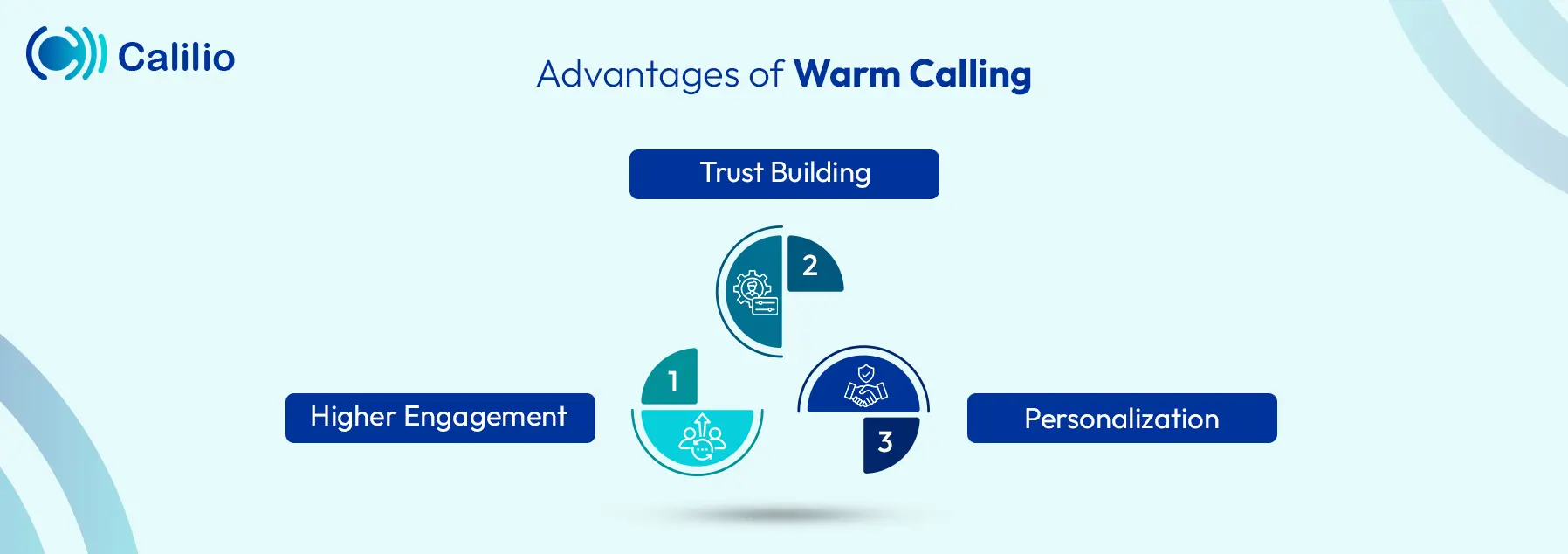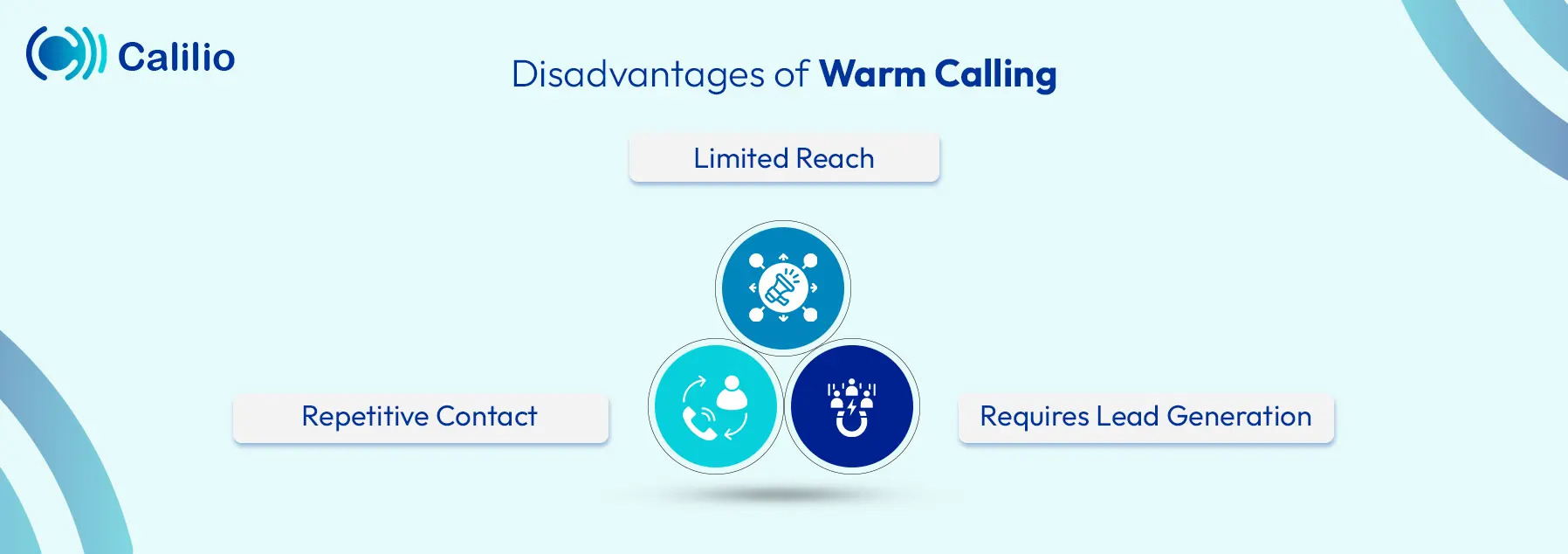Warm Calling vs. Cold Calling: Which Sales Approach is the Best?

Sales calls are a fundamental way to reach out to potential customers. Two common approaches businesses use for sales engagement include warm calling and cold calling.
While both methods involve making calls to engage with prospects, they differ in strategy and effectiveness. Understanding these differences helps you align your sales funnel approach with the right call strategy to boost lead conversion and customer engagement.
In this blog, we’ll compare warm calling vs cold calling, explore the pros and cons of each, and help you decide which method is most effective for your business.
Key Highlights:
Warm calling reaches out to prospects familiar with your brand, while cold calling targets new, unfamiliar leads.
Warm calling increases engagement, builds trust, and leads to more personalized and effective customer conversations.
Cold calling helps expand your customer base, reach new prospects, and create initial interest in your product or service.
Businesses should choose warm or cold calling based on their target audience, current lead engagement, and desired conversion speed.
Understanding Warm Calling
Warm calling is a type of sales call that involves reaching out to potential customers who have already shown some level of interest or have had prior interaction with the company. The prospect already knows your business and has some established engagement. The connection could be from a previous interaction, such as signing up for a newsletter or inquiring through your website.
Example of Warm Call Script
For Example: “Hi [Prospect’s Name], this is [Your Name] from [Your Company]. I hope you’re doing well! I’m reaching out because you recently attended our [webinar/event] on [Topic]. How did you find the session? Do you want to explore our [product/resource]?”
Advantages of Warm Calling

- Higher Engagement: Since the prospect has already shown interest, they’re more likely to engage in a conversation.
- Trust Building: Warm calls build client trust by recognizing past interactions and offering tailored solutions.
- Personalization: You can tailor your pitch to the prospect’s needs or interests, especially if your CRM integration provides insights into their behavior or previous interactions.
Disadvantages of Warm Calling

- Limited Reach: Warm calling only works if you have an existing pool of leads. If you're starting with a fresh list, your options are very limited.
- Requires Lead Generation: You need to invest time and resources in generating leads before you can begin warm calling, making it a longer-term strategy.
- Repetitive Contact: Prospects may feel overwhelmed if they’ve already been contacted multiple times.
Understanding Cold Calling
Cold calling is a classic outbound sales technique where you reach out to cold leads - prospects who have had no prior engagement with your brand. These prospects are completely unfamiliar with your brand or services. The goal is to introduce them to your product or service and generate interest.
Cold calling can feel challenging because you are starting from scratch. Still, the technique helps you reach new people and grow your customer base.
Example of Cold Call Script
For Example: “Hi [Prospect’s Name], I’m [Your Name] from [Your Company]. I’m reaching out because we specialize in [describe your product/service], which helps businesses like yours overcome [specific problem]. Would you like to hear how this could work for you?”
Advantages of Cold Calling

- Proactive Approach: You're taking the initiative, which can be helpful when you're trying to grow your customer base and expand your market reach.
- Opportunity for Growth: Since cold calling targets unknown prospects, you can introduce your business to new people and markets.
- Scalable: You can contact a large number of people quickly, making it easier to generate many leads in a short amount of time.
Disadvantages of Cold Calling

- High Rejection Rate: Since many people are not interested in unsolicited calls, cold calling often results in rejection.
- Time-Consuming: Reaching out to a large number of people who aren’t expecting your call can take significant time. Also, the effort doesn’t guarantee success.
- Requires Strong Sales Skills: Dealing with people who aren’t expecting your call takes skill and persistence to hold their attention.
Automate & Make Your Sales Calls More Effective With A Feature-Rich Power Dialer!
Cold Calling Vs. Warm Calling: Key Differences
Warm calling involves contacting leads familiar with your brand, while cold calling is reaching out to people with no prior connection. Although both are sales strategies, they differ in how you approach the prospect and the likelihood of success.
Here’s how warm calling and cold calling differ in different aspects:
1. Relationship with the Prospect
Warm calling focuses on leads who are already familiar with your brand. They may have attended a webinar, received a referral, or engaged on social media. The connection feels more personal and relevant in this case.
On the other hand, cold calling targets individuals who are completely new to your business. You are reaching out to them with no existing relationship.
2. Success Rate
Warm calling generally has a higher success rate. Since the prospect is familiar with your business, they’re more likely to engage in a conversation.
However, Cold calling usually has a lower success rate. The prospect may not be interested or open to the call, as your business is new to them.
3. Approach and Preparation
Warm calling allows for a more personalized approach. You can refer to past interactions during preparation, making the call more relevant and engaging.
Conversely, cold call scripts are typically more general. Also, you need to introduce your business from scratch and quickly capture the prospect’s attention.
4. Lead Quality
Warm Calling involves higher-quality leads, as the individuals have already engaged with your brand in some way. These leads typically result from inbound strategies like email signups, webinar participation, or social media engagement.
In contrast, cold calling generates lower-quality leads as their level of interest is unknown. They might not be ready to engage or buy your product instantly.
5. Time and Effort
Warm calling can be less time-consuming as the clients have already expressed interest. The call tends to be more focused and productive.
On the contrary, cold calling requires more time and effort as you need to identify and engage with unfamiliar prospects.
6. Sales Cycle Speed
Warm sales calls usually have a shorter sales cycle, and the decision-making process is often faster.
Conversely, cold sales calls generally result in a longer sales cycle. You need to build the prospect’s interest and trust from zero, extending the time to close a deal.
Quick insights on Cold Calling Vs. Warm Calling:
Aspects | Warm Calling | Cold Calling |
Relationship with the Prospect | The prospect knows your brand and has shown interest. | The prospect has never heard of your business. |
Success Rate | Higher success rate. The prospect is more likely to engage. | Lower success rate. The prospect may not be interested. |
Approach and Preparation | Personalized. You can reference past interactions. | General approach. You need to introduce your business. |
Lead Quality | Higher quality leads, as clients have already shown interest. | Lower quality leads, as prospects have never interacted with you. |
Time and Effort | Requires less time. The call is more focused. | Needs more time. You need to build a connection from scratch. |
| Sales Cycle Speed | Shorter sales cycle, interest is already established. | Longer sales cycle, as more trust-building is needed. |
Warm Calls Vs Cold Calls: Which One is Best for Your Business?
Using warm calling or cold calling depends on your business goals, resources, and the stage of your sales process.
Warm calls are ideal for nurturing leads already in your sales pipeline, making them perfect for improving conversion rates and shortening time-to-close.
Cold calls are suitable for reaching new prospects, expanding your customer base, and creating initial interest. You can also use this strategy to test your marketing approach in unfamiliar markets or with new audiences.
Conclusion
Both warm calling and cold calling are valuable sales strategies, but they serve different purposes. Warm calling is good for leads that know your brand, while cold calling is essential for finding new customers. The key is knowing when to use each method to improve your sales and reach your goals.
However, be mindful to use the right phone system to make both strategies more effective. A business phone system, like Calilio, provides telephony features, such as a power dialer, which automates dialing and connects with more prospects in less time.

Get Cashbacks Up to 43% Straight To Your Wallet!
Unlimited Virtual Numbers – Local, Mobile & Toll-Free from 100+ Countries
Free USA/Canada Number + $1 Credit After Subscription
Crystal-Clear Calls Starting at Just $0.0153/min
24/7 Human Support – Because Great Service Never Takes a Holiday


Frequently Asked Questions
How do I transition from cold calling to warm calling?
To shift from cold calling to warm calling, first engage prospects with emails, social media, or free offers. Once they show interest, follow up with a warm call to build the connection.
How do I measure the success of my cold and warm calling campaigns?
How can I balance cold and warm calling in my sales strategy?

Still have questions?
Can’t find the answer you’re looking for? Please chat with our friendly team.
Stay in the loop
Get the latest call insights, trends, and updates delivered straight to your inbox.
By subscribing, you agree to receive updates from Calilio.
You can unsubscribe anytime.